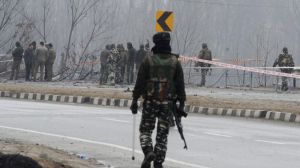All this in the name of legal aid
In 1977 the Constitution was amended to fasten a liability on ruling politicians to provide a system of free legal aid. This was to ensure t...

In 1977 the Constitution was amended to fasten a liability on ruling politicians to provide a system of free legal aid. This was to ensure that opportunities for securing justice are not denied to any citizen by reason of economic or other disability. The politicians washed their hands of this liability by enacting in 1987 the Legal Services Authorities Act. The entire task was passed on to judges from the apex to the district court. It was bankrolled by funding from the Union Government.
The Act gave a charter by which judges had to discharge functions having nothing to do with their constitutional duties of judging and administering their own respective courts. The charter was so wide that it should have made the judges the cutting edge of the fight against corruption in the development process that affects the lives of millions and at the same time illegally funds our politicians. But that has not happened and there seems to be little chance of that happening. Instead, like the ruling politicians,judges-run legal aid is not open to public scrutiny with regard to utilisation of its own funds.
The normal answer to this is that public scrutiny is provided about the end use of legal aid funds through the same legal processes as are applicable to any other funding from the Consolidated Fund of India. That incidentally happens to be the answer of ruling politicians also to the issue of public scrutiny of spending of state funds put at their disposal by law.
The other answer is that since legal aid funds are given to judges no questions must be asked. We must have implicit, unerring faith in anyone called a judge. Such an answer is the complete anti-thesis of democracy through the rule of law, the accountability of anyone in power and the message implicit in the constitutional prohibition against titles. As of today there is not a single public report of the Comptroller and Auditor General on the use of funds in legal aid by the National Legal Aid Authority headed by the Chief Justice of India withanother judge of the apex court nominated by him as a chairman.
The same applies to a public report on the auditing of accounts of the State Legal Aid Authority headed by the Chief Justice of each High Court or the district legal authority headed by a district judge. A widespread phenomenon in which the district judge becomes the worst victim is visible in legal aid functions. This seems to be the result of the culture of appointments, transfers and elevations created by the apex Court. Over the years, through judicial pronouncements, there is a culture of completely centralised power in the apex court with none having the right to question how and what kind of judges are being given to the country by the apex court. When persons who have succeeded in reaching the judicial seat through such processes get charge of legal aid at various levels, then legal aid becomes a celebration of deference to the next higher rung even outside the court, with some lawyers added on.
Under Section 12 of the Act, thoseeligible for legal aid are the well-recognised classes of the historically oppressed: scheduled castes and scheduled tribes, victims of trafficking and bonded labour, women and children, the mentally ill and disabled, victims of disasters, ethnic violence, caste atrocities, floods, drought, earthquakes and industrial disasters, those in custody under the Mental Health Act and those having an income of less than Rs 12,000 per annum for the Supreme Court and less than Rs 9,000 per annum for other courts. In plain language slum, illiterate, disabled India is given to the legal custody of judges for getting justice.
It is in the name of this India that maximum funds are doled out and out of which politicians at various levels get funded. Yet you do not find a single legal aid outpost of the national, state or district legal aid authority in the slums. The politician as usual has the last laugh with public money and public law.
Under Section 4 of the Act, the national authority is charged with the duty offraming the “most effective and economical schemes for the purpose of making legal services available under the Act.” There is no shortage of five star hotel lectures of judges about courts being a service institution for the people. The Act under Section 4(d) empowers the national authority to fight for the weaker sections through social justice litigation. Till today the national authority has not found a single fit case to file for rehabilitation of tribals ousted in dam projects, for the victims of environmental disasters of development, the non-existent facilities for children and women under urban uplift programmes or on the processes of exemptions from excise which affect the lives of consumers.
Legal aid as a vehicle for career progress is justifiable when service is actually rendered to the people in whose name it is funded. But when it becomes only a vehicle of meeting politicians, of ensuring elevation in the judicial hierarchy and of a smug feeling of being close to those in power, then itbecomes a moral, albeit perfumed, stink of cooperation between the judiciary and the executive. Are the vastly resourceful religious orders wisest in having free hospitals but not a single free legal aid clinic? If so, then that is a telling commentary on our legal and judicial system.
Photos





- 01
- 02
- 03
- 04
- 05


























